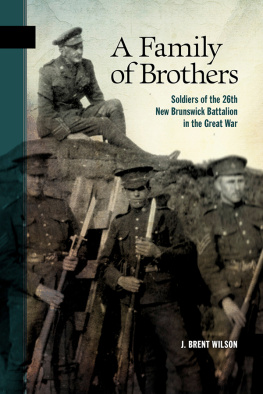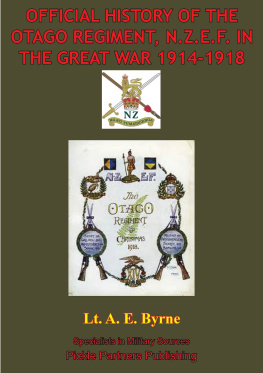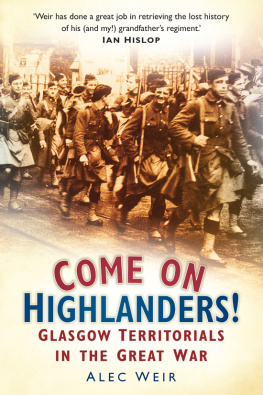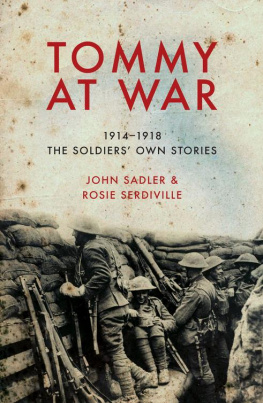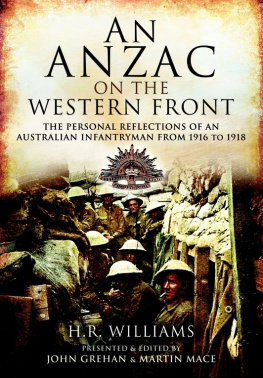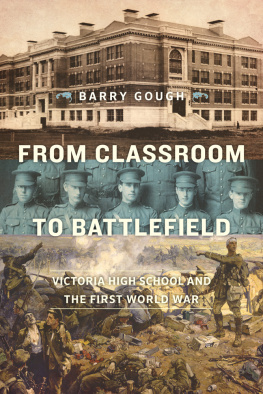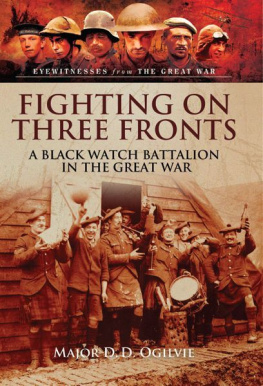They fought at Ypres in the fall of 1915, and at the Battle of the Somme at Courcelette and Regina Trench in 1916. They carried on to Vimy Ridge, Hill 70, and Passchendaele in 1917. They were part of the battles at Amiens and the Hundred Days campaign of 1918. The 26th Battalion was one of only a few Canadian infantry units to serve continuously on the Western Front from 1915 until the Armistice in 1918. More than 5,700 soldiers passed through its ranks: 900 were killed and nearly 3,000 were wounded. Only 117 of the original 1,150 recruits returned home after the war ended. A Family of Brothers tells the powerful story of the Fighting 26th, from their mobilization to the aftermath of the war. Using letters, newspaper accounts, war diaries, and other official documents, Brent Wilson offers a compelling account of the soldiers at the front and those behind the lines, examining their experiences of the war and how their lives would be transformed upon their return to the Canada.
J. Brent Wilson teaches in the history department at the University of New Brunswick and is Editor Emeritus of the New Brunswick Military Heritage Series. He is the editor of Hurricane Pilot: The Wartime Letters of W.O. Harry Gill, D.F.M., 1940-1943 and a co-author of Kandahar Tour: The Turning Point in Canadas Afghan Mission.

New Brunswick Military Heritage Series, Volume 25
Copyright 2018 by J. Brent Wilson.
All rights reserved. No part of this work may be reproduced or used in any form or by any means, electronic or mechanical, including photocopying, recording, or any retrieval system, without the prior written permission of the publisher or a licence from the Canadian Copyright Licensing Agency (Access Copyright). To contact Access Copyright, visit www.accesscopyright.ca or call 1-800-893-5777.
978-0-86492-944-0 epub
978-0-86492-945-7 kindle
Previously published in softcover, 978-0-86492-923-5
Edited by J. Marc Milner.
Cover design by Kerry Lawlor.
Page layout by Chris Tompkins.
Front Cover: Captain Frederick F. May and enlisted men of the 26th New Brunswick Battalion, East Sandling Camp, England, July 1915. Harold Wright Collection.
Frontispiece: Soldiers of the 26th New Brunswick Battalion on board the troopship S.S. Caledonia, June 13, 1915. 1989.140.2, New Brunswick Museum
Printed in Canada.
10 9 8 7 6 5 4 3 2 1
We acknowledge the generous support of the Government of Canada, the Canada Council for the Arts, and the Government of New Brunswick.
Goose Lane Editions
500 Beaverbrook Court, Suite 330
Fredericton, New Brunswick
CANADA E3B 5X4
www.gooselane.com
New Brunswick Military History Project
The Brigadier Milton F. Gregg, VC,
Centre for the Study of War and Society
University of New Brunswick
PO Box 4400
Fredericton, New Brunswick
CANADA E3B 5A3
www.unb.ca/nbmhp
Dedicated to the soldiers who served in the 26th New Brunswick Battalion during the Great War.
Contents
Introduction
On May 17, 1919, The 26th New Brunswick Battalion, C.E.F., returned home after being overseas for more than four years. During that time, 5,719 soldiers, many of them New Brunswickers, served in its ranks. As such, the 26th Battalion was the single largest concentration of Great War soldiers from the province to fight on the Western Front.
The details of the 26ths war are well known, especially through the richly detailed regimental history, New Brunswicks Fighting 26th: A History of The 26th New Brunswick Battalion, C.E.F. 1914-1919, by S. Douglas MacGowan, Harry (Mac) Heckbert, and Byron E. OLeary. What is less familiar is who these soldiers were and what they experienced. To that end, this book describes the basic history of the Fighting 26th, and provides an in-depth examination of how these soldiers endured the war. What emerges is a story about how ordinary men, many of them young, unmarried, and living at home when they enlisted, found a place in history and experienced one of the greatest and most tragic events of modern times. The tale will enable us to understand better not only how an infantry battalion functioned at the front in the Great War, but also how the war affected New Brunswick as a whole both during and after the conflict.
The book views the war through the eyes of the troops by drawing heavily on the letters and diaries they wrote. Hundreds of these letters were printed, often verbatim, in provincial newspapers, especially early in the war before censorship limited their publication. The book also makes use of the few post-war memoirs written by soldiers of the 26th. As well, to provide the wider context needed to understand more specific personal experiences, the book draws on numerous primary documents, including the units war diaries, Daily Part II Orders, and after-action reports, soldiers personnel files, which are now available online at the website of Library and Archives Canada, and unit nominal rolls. Finally, the story is also based on field work conducted by the author, including numerous tours of the battlefields and travels throughout New Brunswick, particularly to visit local cemeteries, churches, schools, and cenotaphs, to help us see these soldiers within their family and community settings.
Nevertheless, some important parts of the story are either missing or underreported, mainly because the records do not exist. Many of the men in uniform who supported the fighting forces remain largely anonymous: little is known, for example, about the day-to-day activities of Major James Pringle and his quartermaster staff, the medical officer and his assistants, the paymaster, and the orderly room staff; they, too, made a significant contribution to the battalions war.
The book follows a chronological format, beginning with the raising of the battalion in the late fall of 1914, followed by the long period of preparation in New Brunswick and Britain, and then its time at the Western Front in Belgium and France starting in mid-September 1915 and concluding with the Armistice on November 11, 1918. The survey then follows the battalions little-known time in Germany as part of the Allied occupation force and longer interlude in a small town in central Belgium, the return home in May 1919, and then, more briefly, the lives of the battalions soldiers in the post-war years. Two thematic chapters step outside this chronological timeframe, however, to examine important subjects that are often overlooked. The first focuses on the soldiers life at the front, especially before and after major battles during periods of more routine trench warfare, and while the troops were at rest behind the lines a longer period than is generally understood. The second thematic chapter looks at the experiences of the large number of troops who left the battalion, either temporarily or permanently, especially as casualties. This chapter also examines the thousands of men the majority of the soldiers of the 26th who joined the battalion as reinforcements beginning in the fall of 1915: who they were, how they arrived, and how they fitted in.
In the end, A Family of Brothers

